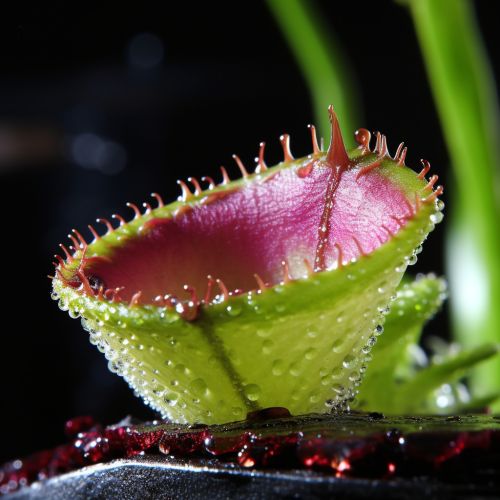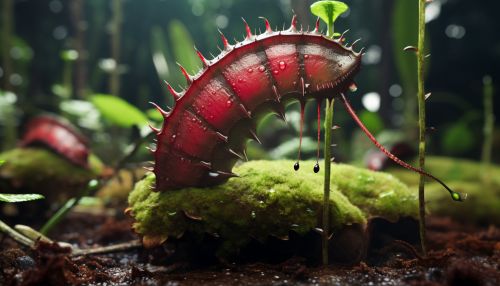Mechanisms of Nutrient Acquisition by Carnivorous Plants
Introduction
Carnivorous plants are a unique group of flora that have developed adaptations to thrive in environments where nutrients, particularly nitrogen and phosphorus, are scarce. These plants derive some or most of their nutrients from trapping and consuming animals or protozoans, typically insects and other arthropods. This article delves into the various mechanisms of nutrient acquisition employed by these fascinating plants.
Evolution of Carnivorous Plants
The evolution of carnivorous plants is believed to have occurred in response to their habitats. These plants often grow in places where the soil is thin or poor in nutrients, especially nitrogen, such as acidic bogs and rock outcroppings. Over time, these plants have evolved sophisticated mechanisms to attract, trap, and digest prey, thereby supplementing their nutrient intake. This evolutionary adaptation has occurred independently in several plant lineages, resulting in a diverse array of trapping mechanisms and prey preferences.


Trapping Mechanisms
Carnivorous plants employ various trapping mechanisms to capture their prey. These mechanisms can be broadly classified into five types: pitfall traps, flypaper traps, snap traps, bladder traps, and lobster-pot traps.
Pitfall Traps
Pitfall traps, also known as pitcher plants, are characterized by a deep cavity filled with digestive liquid. The inner walls of the pitcher are slippery, causing the prey to fall into the trap. Examples of pitcher plants include the tropical pitcher plants and the North American pitcher plants.
Flypaper Traps
Flypaper traps secrete a sticky mucilage that ensnares the prey. The plant then slowly wraps around and digests the trapped insect. Examples of flypaper traps include sundews and butterworts.
Snap Traps
Snap traps are characterized by rapid movement. These plants have modified leaves that snap shut when triggered by the prey. The most famous example of a snap trap is the Venus flytrap.
Bladder Traps
Bladder traps are unique to the aquatic genus bladderwort. These plants have small, bladder-like traps that create a vacuum to suck in small organisms.
Lobster-Pot Traps
Lobster-pot traps, also known as eel traps, have entrances that are easy to enter but difficult to exit, much like a lobster pot. The corkscrew plant is an example of a plant that uses this trapping mechanism.
Digestion and Absorption of Nutrients
Once the prey is trapped, the plant secretes digestive enzymes to break down the prey's body. The process of digestion varies among different types of carnivorous plants but generally involves the secretion of enzymes such as proteases, phosphatases, and ribonucleases. These enzymes break down the proteins, nucleic acids, and other molecules in the prey's body into simpler compounds that the plant can absorb.
The absorption of nutrients is facilitated by specialized cells in the plant's trap. In some plants, like the Venus flytrap, these cells are located on the inner surface of the trap. In others, like the pitcher plants, they are located in the lining of the pitcher.
Ecological Significance
The nutrient acquisition strategies of carnivorous plants have significant ecological implications. By deriving nutrients from animals, these plants can survive in nutrient-poor environments where other plants struggle to grow. This allows them to colonize unique ecological niches and contribute to biodiversity.
Furthermore, carnivorous plants play a role in controlling insect populations. By preying on insects, these plants can help to keep insect populations in check, thereby contributing to the balance of the ecosystem.
See Also
- Adaptations of plants to nutrient-poor environments - Insectivorous Plants - Ecology of Carnivorous Plants
